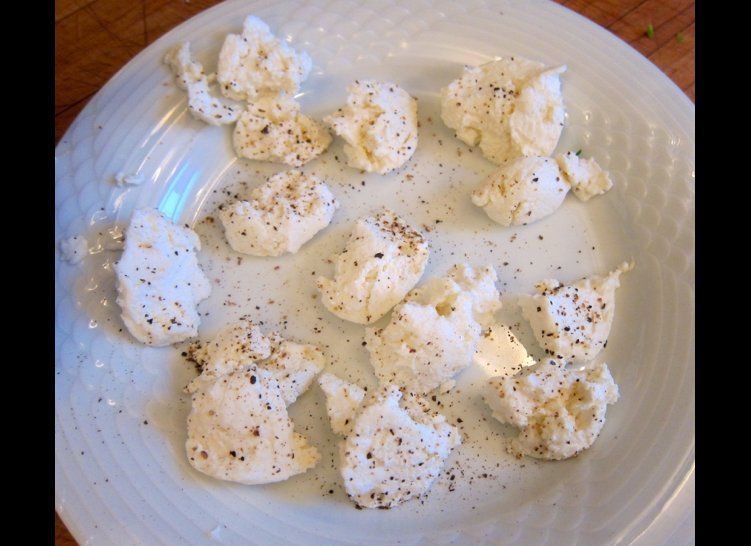
Last week, I got all het up about the wonderful sheep's milk ricotta we'd had for dessert and said that the rest of it was destined for a pasta dressing. That was no empty threat: Two days later, a big bowl of linguine turned up on our dining table, starring that ricotta and some extremely savory cherry tomatoes from a favorite farmers' market grower, Stokes Farm.
It was a simple dish that depended on the excellence of the ingredients (read last week's post to find out in what ways the ricotta was so good), but there were a couple of useful tricks to making it, and it had its own trick of changing as we ate it.
The idea was that the excellent tomatoes and ricotta ought not to be subjected to cooking, but needed to be warm. So rather than heating them in a pan and adding the cooked pasta, I did the opposite. When the linguine (spaghetti would have been grand, too) were nearly done, I ladled a quarter cup of the salty, somewhat starchy cooking water into a skillet over medium-high heat, then added two or three tablespoons good olive oil. The action of boiling, plus that of shaking the pan, helped the oil and water to come together, at least partially; the purpose of this near-emulsion -- besides adding olive-oil flavor -- was to keep the pasta loose and moist when it was added to the skillet, which it was the instant it was cooked to our liking (firm but without any hint of a chalky center).
When the linguine and oil-water mixture had been tossed to combine, I added -- still over the fire -- 10 or a dozen cherry tomatoes, previously quartered, salted and mixed with roughly chopped parsley and basil; and about a cup of the cup and a half of ricotta I'd earlier divided into blobs on a plate (to make its addition a quick operation) and had seasoned with pepper. As soon as this was more or less combined, I turned it out into a warmed serving bowl and dotted the top with the remaining blobs of peppered ricotta.
In this way, all the tomatoes and most of the ricotta were warmed through but retained their raw freshness; the rest of the ricotta grew just warm enough to become creamier by sitting on top of the steaming linguine. Note that I went uncharacteristically easy on the salt in this dish: the tomatoes and the pasta-boiling water had been duly salted, and that was about all that was needed.
The special magic of the dish came in the eating: Initially, most of the ricotta remained in discrete spoonsful. But as Jackie and I moved the linguine around to twine it onto our forks, spearing tomato quarters as we went, the rest slumped down into the oil, water and tomato juices and become a true sauce that clung to the pasta. You could of course make this happen in the skillet, but where would the fun be in that? This was almost like eating an ice cream sundae, which begins life beautifully layered in its glass coupe but ends up as an even more delicious mess.
Later in the summer, you can make this with big, ripe tomatoes cut into chunks -- but you must never make it with any tomatoes that are less than memorable (or with bland, wet ricotta).
